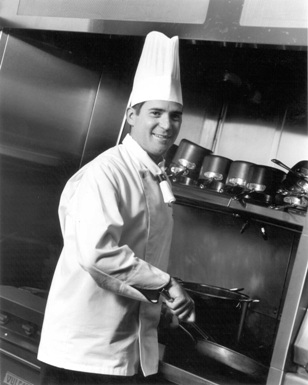Introducing Cost Control in Culinary Education
01 October 2010By Birch DeVault
 More easily applied in the culinary lab than the classroom, keep the learning active, engaging and authentic.
More easily applied in the culinary lab than the classroom, keep the learning active, engaging and authentic.
In my culinary classes, I attempt to direct my students’ learning activities from the basic to the complex. I’ve had success with this kind of cognitive scaffolding when it comes to the food itself, the method of preparation, the care in the process of cooking, and in the construction of the final plate presentation. Many of my students consider themselves artists in the making or formative craftsmen, so the idea of building them as business people is a little difficult for some to approach. I find that containing the idea of cost within the pursuit of art or craft is not only challenging, but adds authenticity to tasks committed within an applied learning environment.
In creating a learning exercise focusing on cost control, the obvious first step is to define the cost of ingredients. A standard pricing list from a purveyor is best if the instructor is to establish an authentic environment from the beginning. If such a list is not available, a simple list of ingredients with no pricing, or a standardized recipe, would be a good substitute. The facilitator and the learners can then assign each ingredient a cost. This opens up an opportunity to review the cost of ingredients versus usable product. Throughout the exercise, the facilitator should emphasize that the chef is directly responsible for the cost of food, and that the cost of that food is directly influenced by its ordering, its storage and its handling.
While this kind of open-ended exercise can be conducted in a traditional classroom, it is even more easily applied in a culinary-laboratory situation. In my classes, after the cost of ingredients is determined, individual learners are tasked to prep ingredients, retaining both usable product and waste. At the end of prep, the group as a whole comes together to observe the outcome of the preparation, and open discussion provides an overview of the practice of preparation as well as the cost implications of excess waste.
The best way to introduce cost control in culinary education is to keep the learning active, engaging and authentic. When a facilitator places students in the role of chefs and makes them aware that even the simplest ingredients have a cost, he or she will ensure a lasting impression of the importance of cost control.
Birch DeVault is department chair of the College of Culinary Arts at Johnson & Wales University, Denver.
